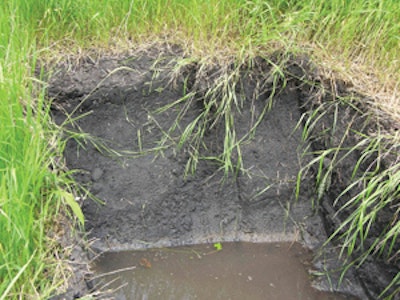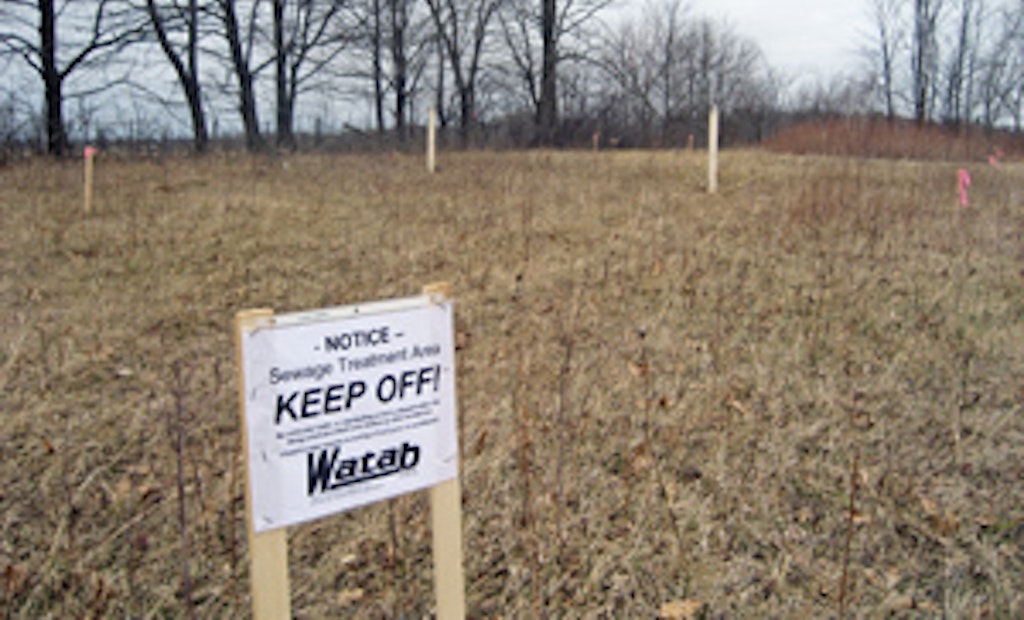Interested in Repair?
Get Repair articles, news and videos right in your inbox! Sign up now.
Repair + Get AlertsAs we travel and talk about good installation principles, we often hear questions about why installers need to know their soils. Last month we said it’s important for installers to know soils so they can determine whether there is proper separation between the infiltrative surface of the system and any limiting soil condition.
It is also important to recognize soil textures and to understand the relationship between soil type or classification in your state’s rules and the size of treatment unit needed. Let’s look at the general principles a little more closely and see how a better understanding of soil and site conditions can help avoid problems during installation.
The plastic limit
The first general principle is to Keep It Dry (KID). You need to consider at least three parts to this principle when locating and installing the soil treatment unit. From an equipment standpoint, keeping it dry means not excavating or working the soil when it is too wet. If the soil moisture content is above the plastic limit, equipment can cause smearing and compaction.
Compaction is the compression of soil particles, reducing the size of the soil pore spaces. Smearing spreads the soil particles by sliding pressure. Either way, the end result is the reduction of soil infiltration capacity. So, whether you are installing belowground gravity trenches or at-grade or aboveground systems, compaction at the soil surface may doom your system to failure, even if you install all the other system components correctly.
The moisture content of the soil should be checked at the depth of excavation if belowground trenches are to be installed, or a depth of 8 inches if installing an at-grade or aboveground system. The method for determining the plastic limit is specified by the American Society for Testing and Materials, Standard Test Methods for Liquid Limit, Plastic Limit, and Plasticity Index of Soils, ASTM D4318 (2005).
Doing it right
To run the test, take a handful of soil and see if you can mold and roll it into a wire that is 1/8 inch in diameter. If so, the moisture content is above the plastic limit and needs to dry out before you proceed with the installation. If the soil crumbles and falls apart when you try to roll the sample into a wire, the moisture content is below the plastic limit and you can go to work.
The higher the clay content of the soil, the more likely the soil retains moisture. The higher the moisture content, the more the soil loses strength, and the more compaction and smearing will occur. So when applying this test, if there is any question, err on the side of waiting for the soil to dry.
Recognize that it is not only your equipment that can cause compaction and smearing. Any other activity associated with house construction can affect your site. That is why you should protect the location of the soil treatment area before, during and after your installation.
Separation distance
The second way the KID principle comes into play is the separation distance to seasonal or permanent water tables or saturated soil conditions. The closer the bottom of the excavation comes to a zone of soil saturation, the more likely the soil will be too wet to excavate.
In addition, the separation distance is specified to ensure proper treatment of the wastewater. In our state (Minnesota), that separation distance is 3 feet. We have seen different states’ codes requiring from 2 to 10 feet of separation, so you need to know what the limit is for your state.
Typically, we use soil color as a way to determine the presence of seasonal saturation. So even if you or someone else digs a hole and it remains dry, that doesn’t mean the soil will still be dry during wetter periods. As an installer, you should recognize the color indicators for wet soil conditions in your area.
Periodically in this column, we cover those criteria and characteristics. One side note: Based on our visits to more arid locations in New Mexico and Arizona, color is as important there as an indicator as in our more humid location.
Dealing with surface water
The third part of the KID principle is the need to deal with surface water additions to the system location. Since we expect the soil treatment area to accept several hundred gallons of water a day, the addition of any extra water, regardless of source, can affect system performance.
Where the system is located on the natural landscape is important. One common mistake, particularly in gravity installations, is to install the treatment part of the system at the base or toe of a slope. This is the point on a natural landscape where the slope begins to flatten out and surface runoff will slow down and begin to infiltrate.
This is bad enough if the infiltration occurs over the soil treatment area, but it is even worse if the septic tank is also located in this area and all connections are not absolutely watertight. If too much surface water is delivered to the soil treatment area, it will become overloaded, resulting in system failure.
Concave sloping sites are areas where both surface water flow and subsurface drainage can come together, overloading the system. These areas, as well as swales, depressions, or other landscape areas that concentrate subsurface flows, need to be avoided.
Beyond the boundaries
Another thing to be aware of is that the house, outbuildings, driveways and other structures are impermeable surfaces that can contribute water to the system. You may need to work with the homeowner to redirect some of this flow, or install a surface diversion.
Recognizing this as a potential problem may require you to look beyond the boundaries of the lot you are working on. Look for potential for lots or structures located upslope to add water. We see this issue not only in our glaciated Midwest landscapes, but also in more mountainous or hilly areas to the east and the west.
Next month we will visit more of the soil treatment unit installation principles.








